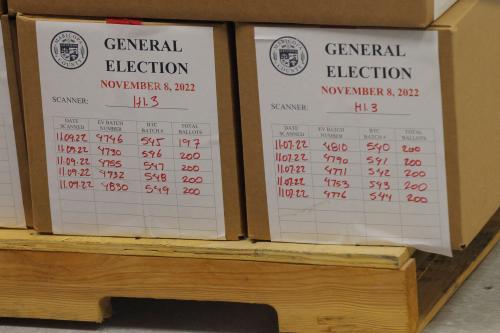Editor’s Note: This piece is translated and adapted from Domenico Lombardi’s bimonthly column “Pennsylvania Avenue” in the Italian daily Il Foglio.
The recent election outcomes in the regions of the Basque country and Galicia once again put the limelight on Spain and the ability of Prime Minister Mariano Rajoy’s government to stabilize and reform the country’s economy. As expected, the Nationalist Party gained a relative majority of 27 seats out of 75 in the Basque country. The leader of the Basque Nationalist Party, Iñigo Urkullu, is expected to take the helm of the regional administration once he forms a coalition, which will likely include the Socialist Party and its 16 seats. In Galicia, on the other hand, the People’s Party of Rajoy further consolidated its absolute majority in the premier’s native region, taking 41 seats out of 75, three more than in the previous elections.
With the election deadline now past, some observers believe that a formal request for assistance under the European Central Bank’s new Outright Monetary Transactions program (OMT) is imminent. Through the program, the ECB would agree to potentially unlimited purchases of government bonds on the secondary market in order to stabilize bond prices and to improve market-access for sovereigns under stress. And yet, it may be precisely the introduction of the OMT that could lead the Spanish prime minister to continue with his wait-and-see approach, which seems benefitting him and his party in the recent elections. This approach by Spain is encouraged by the large amount of liquidity that is already being made available by the ECB—as well as the liquidity promised under the umbrella of the OMT. Moreover, the U.S. Federal Reserve and the Bank of Japan have also introduced nonconventional monetary policy tools, such as another round of quantitative easing. Altogether, these central banks have flooded markets with such huge amounts of liquidity to calm global investors and markets for the time being.
Moreover, regional policy in Spain does not seem to offer any short-term timeline that might facilitate a proactive reformist shift away from the almost daily balancing act of Rajoy’s government. In about one month’s time, the Spanish government will have to face new regional elections, this time called by the Parliament of Catalonia, the country’s richest region. The elections will revolve around the underlying secessionist agenda that will presumably be supported by two-thirds of the newly-elected parliament. Under the threat of a secessionist referendum that would be called no sooner than 2014 and would, in effect, overwhelm the political dynamic of the Rajoy mandate, further regional elections may be brought forward. While all the regions of Spain missed the deficit targets for 2011, a good eight of them so far have requested the intervention of the regional liquidity fund to plug their draining coffers, depleting the fund’s financial capability in the process.
The Risky Consequences for the Euro
It is exactly this regional dimension that remains the Achilles’ heel for Spain, which up to this point has dulled the impetus for reforms. In Spain, the regions manage about half of non-social security public expenditures. By contrast, their scope to manage revenues is limited as they have no authority over the value-added tax or income tax. The composition of regional expenditures—with education, health and public services accounting, on average, about 80-85 percent of the respective regional budgets—makes any attempt at rationalization highly politicized. Thus, there is a continual passing of the buck by Spain’s regional governments to its central government, which itself is reluctant to cut unemployment subsidies and infrastructures spending.
Therefore, despite Spain having missed the 2011 deficit target by a good three percentage points of GDP, the government still announced a decision to increase pensions to compensate for the erosion in purchasing power caused by inflation.
The uncertainty that all this engenders further exacerbates the problem, undermining debt sustainability because of a relentlessly contracting GDP. Accordingly, the build up of stably recessionary expectations for growth could trigger a new wave of escalating pressure on Spanish yields, when it becomes evident that Madrid is in no position to implement a medium-term stabilization strategy.
In this context, it may soon become obvious that the request to activate the OMT will open a new and uncertain chapter on the eurozone crisis rather than providing the region with the stabilizing framework, which many have hoped for. Faced with a possible failure by Spain to meet the gamut of conditions in order to activate the ECB bond-buying program, the ECB will find itself at a crossroads: one path could lead to the immediate suspension of the purchasing program with the consequence of setting off a financial tsunami; the other path could lead to European authorities requesting some direct, centralized powers to oversee the country’s public finances and reform agenda as a necessary condition for the continuation of the program.
The Precedent of Washington and New York
This last option would expose the ECB to an incalculable political risk that is greater even than any risk the Federal Reserve has taken in recent history. In the rescue of the city of New York in the 1960s and of Washington in the 1990s, the U.S. Congress authorized federal intervention on the condition that the two cities establish a “control board” nominated by Congress and charged with overseeing municipal finances. The Fed, despite enormous pressure, managed to stay out of the rescue. However, in Europe’s case with the absence of a full-fledged European government, the ECB could be called on once again to fill the institutional vacuum. As it goes, Spain is likely to provide the trigger that may redefine—for better or worse—the future setup of the eurozone’s governance arrangements.



Commentary
Op-edSpain’s Risky “Wait-and-See” Attitude and the Consequences for the Eurozone
October 24, 2012